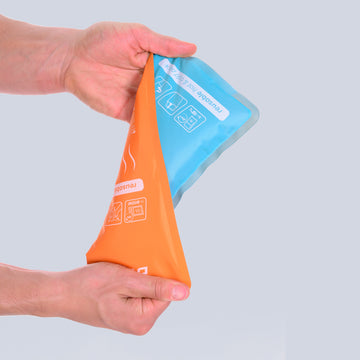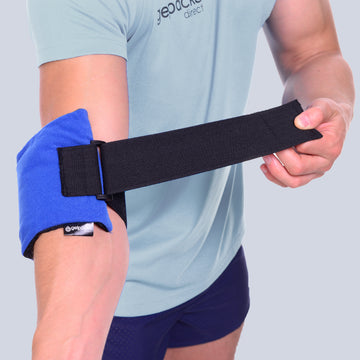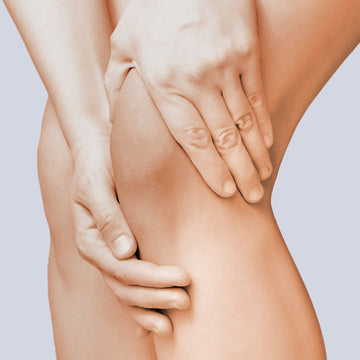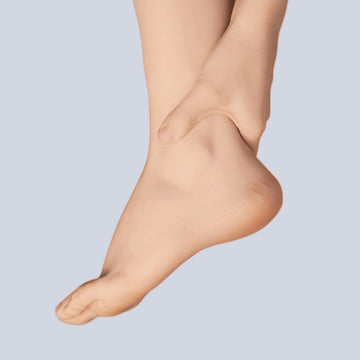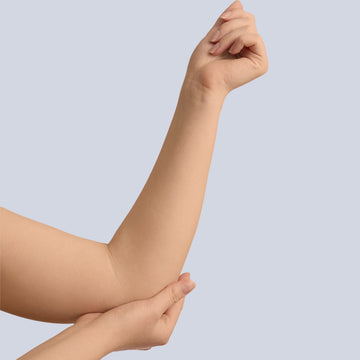Posted by Tia Patel | Apr-14-2021

Vitamin D for Pain Relief
Happy National Sun Awareness Week!
With the Coronavirus pandemic having kept us locked in our houses for the last year, particularly during the Winter months, Vitamin D deficiency is a common condition which affects 27% of the UK population (forth with life)
According to Forth With Life, everyone in the UK is at a greater risk of vitamin D deficiency which can have major health consequences if ignored.
For National Sun Awareness week we’re bringing you everything you need to know about Vitamin D including what symptoms to look for if you’re deficient and how vitamin D is useful for managing pain.
What is vitamin D and why do we need Vitamin D?
Vitamin D helps regulate the amount of calcium and phosphate in the body. These nutrients are needed to keep bones, teeth and muscles healthy. A lack of vitamin D can lead to bone deformities such as rickets in children, and bone pain caused by a condition called osteomalacia in adults.
Symptoms of a Vitamin D deficiency
- Getting sick often
- Fatigue and tiredness
- Bone or back pain
- Depression
- Bone density loss
- Hair loss
- Muscle pain
How does Vitamin D help in pain management
Vitamin D is vital for bone and muscle function and may have anti-inflammatory effects. As a result, vitamin D plays a role in relieving joint pain, particularly where inflammation is the cause.
Studies have linked vitamin D deficiency to rheumatoid arthritis (RA) , a chronic inflammatory condition that affects the joints. A review of studies from 2016 showed that people with RA had notably less vitamin D in their blood than people without RA. They also found that people suffering RA were more likely to have a vitamin D deficiency with a 2012 study suggests that a vitamin D deficiency may be a risk factor for the onset of inflammatory diseases.
These studies suggest that a deficiency in Vitamin D could not only be the cause of inflammatory diseases but could make the pain felt much worse. So it's important to make sure your body is getting the right amount of Vitamin D daily.
How much vitamin D do I need?
- Babies up to the age of 1 year need 8.5 to 10 micrograms of vitamin D a day.
- Children from the age of 1 year and adults need 10 micrograms of vitamin D a day. This includes people who are most at risk of vitamin D deficiency including adults over 55, people following a vegan diet, pregnant and breastfeeding women, people with a higher body fat percentage and anyone with a darker skin tone.
A microgram is 1,000 times smaller than a milligram (mg). Sometimes the amount of vitamin D is expressed as International Units (IU). 1 microgram of vitamin D is equal to 40 IU. So 10 micrograms of vitamin D is equal to 400 IU.
How to get Vitamin D
The body can either create vitamin D through exposure to sunlight or obtain vitamin D from the diet. Key sources of vitamin D include:
-
Sunshine - The body can make its own vitamin D from ultraviolet B rays when exposed to the sun. The best way to promote optimum vitamin D levels is to get outside every day for a walk or a run. It is essential to avoid hot, midday sun to prevent burning which can cause skin damage and increase the risk of skin cancer. This is also difficult to do during the winter months when ultraviolet B ray are at their lowest, so it may be necessary to obtain this vitamin from dietary sources instead.
-
Food - Its recommend that adults have 10-15 micrograms (mcg) of vitamin D per day. The foods below are some of the few that are rich in vitamin D and should be incorporated into your diet each day if possible- oily fish, such as salmon, mackerel, and tuna- fortified milk- beef liver- egg yolks - mushrooms- fortified breakfast cereals
-
Supplements - Some people, such as vegetarians or older adults, may struggle to get enough vitamin D, especially in the winter. In this case, supplements may be useful for:- older adults, as the skin loses its ability to convert vitamin D as effectively with age- people with darker skin, as it may be more difficult for the skin to use sunlight for vitamin D production- breast-fed babies who rely on another person for their vitamin D
It is possible to obtain vitamin D supplements from pharmacies or online. We recommend talking with a doctor or healthcare professional before taking any new supplements.
If you think you may have a Vitamin D deficiency, it’s important that you speak to your doctor and get your blood levels measured. Fortunately, a vitamin D deficiency is usually easy to fix and can have big benefits for your health.
#TeamGPD

